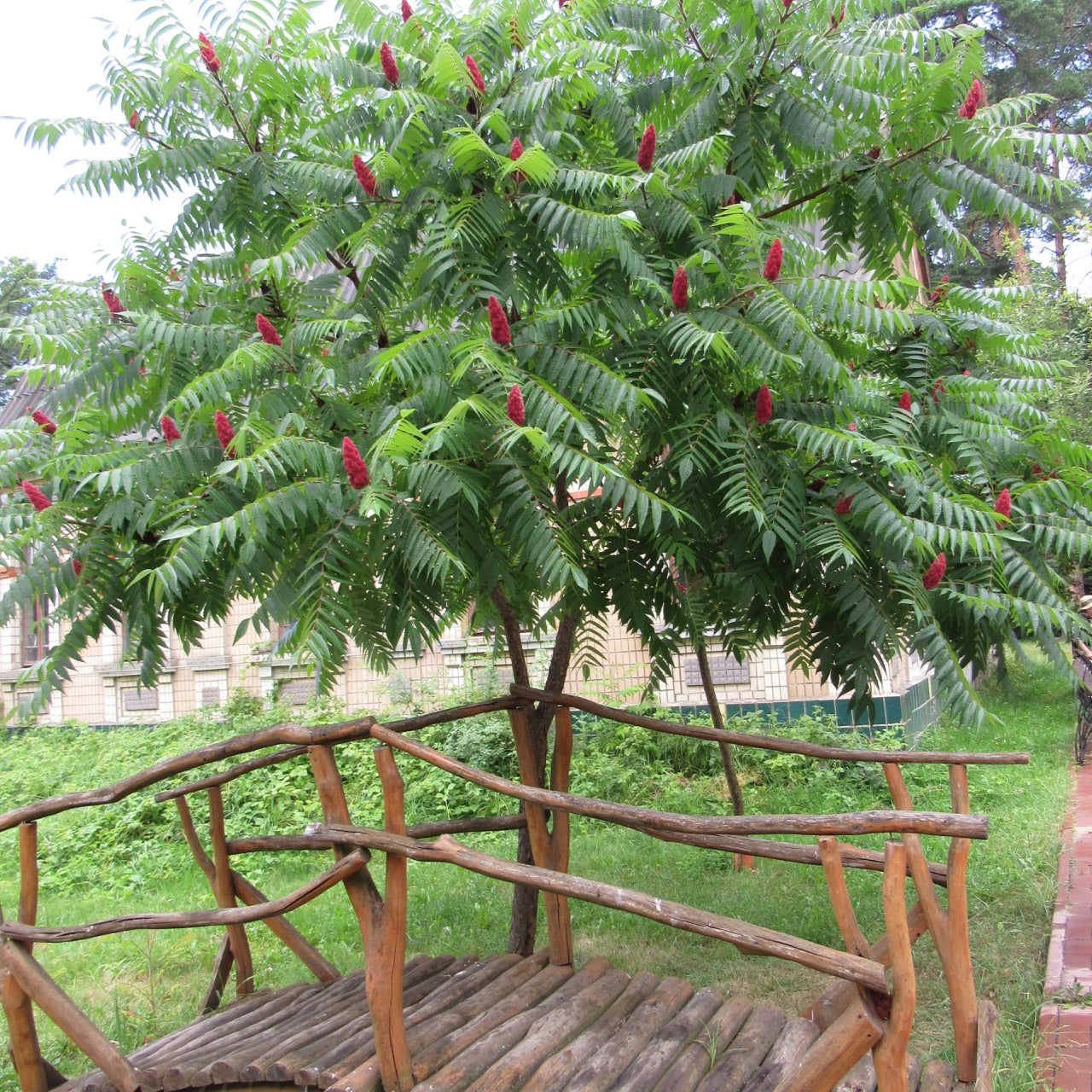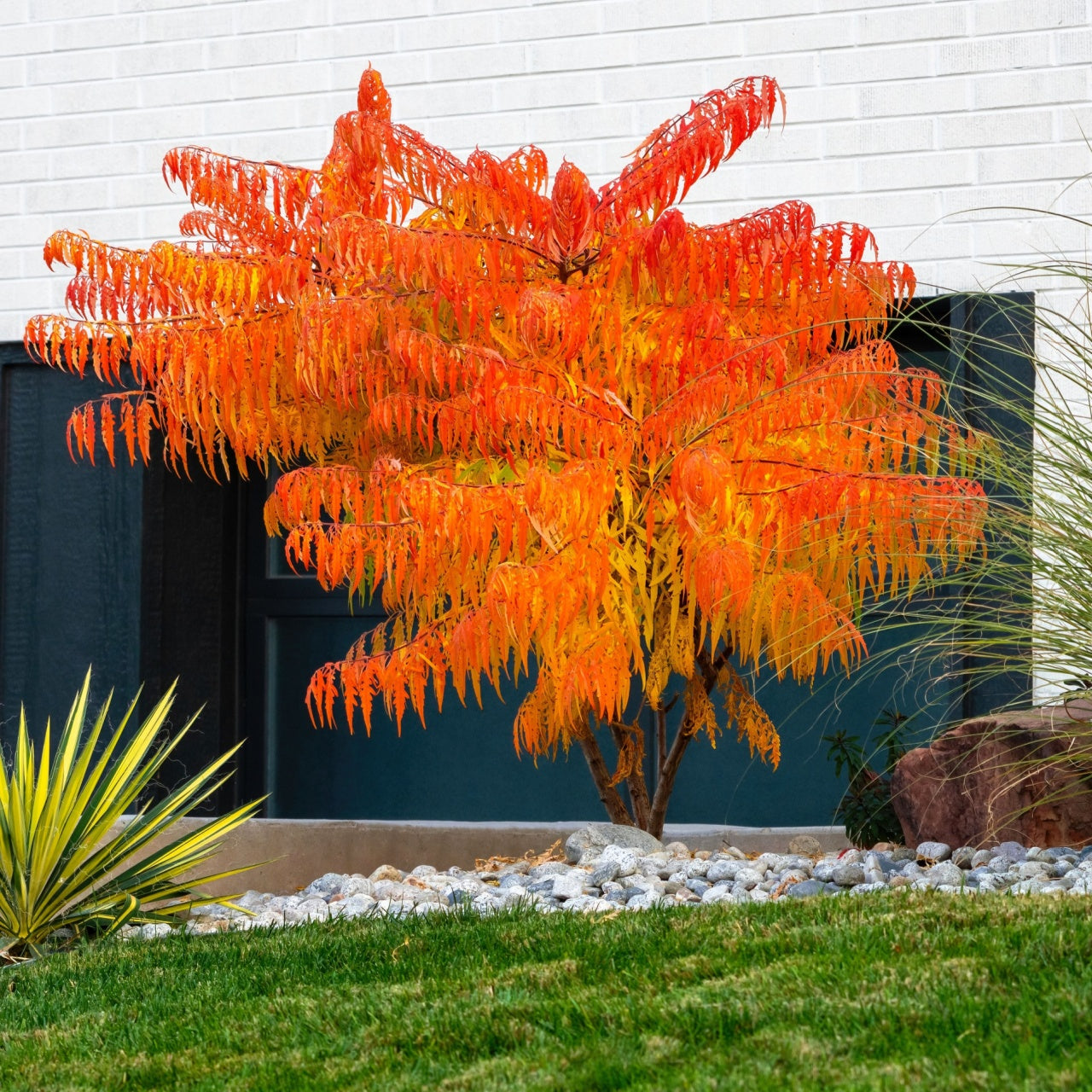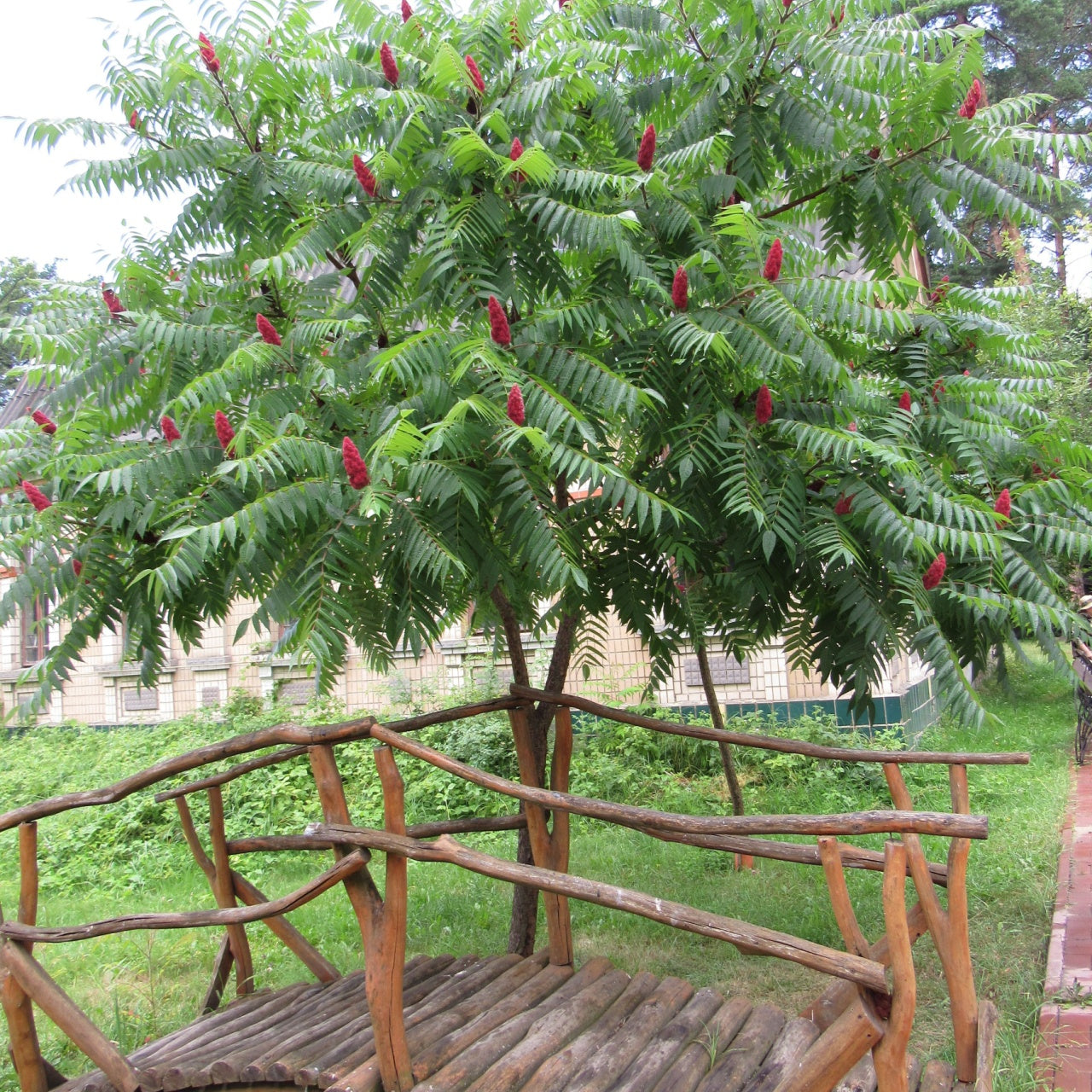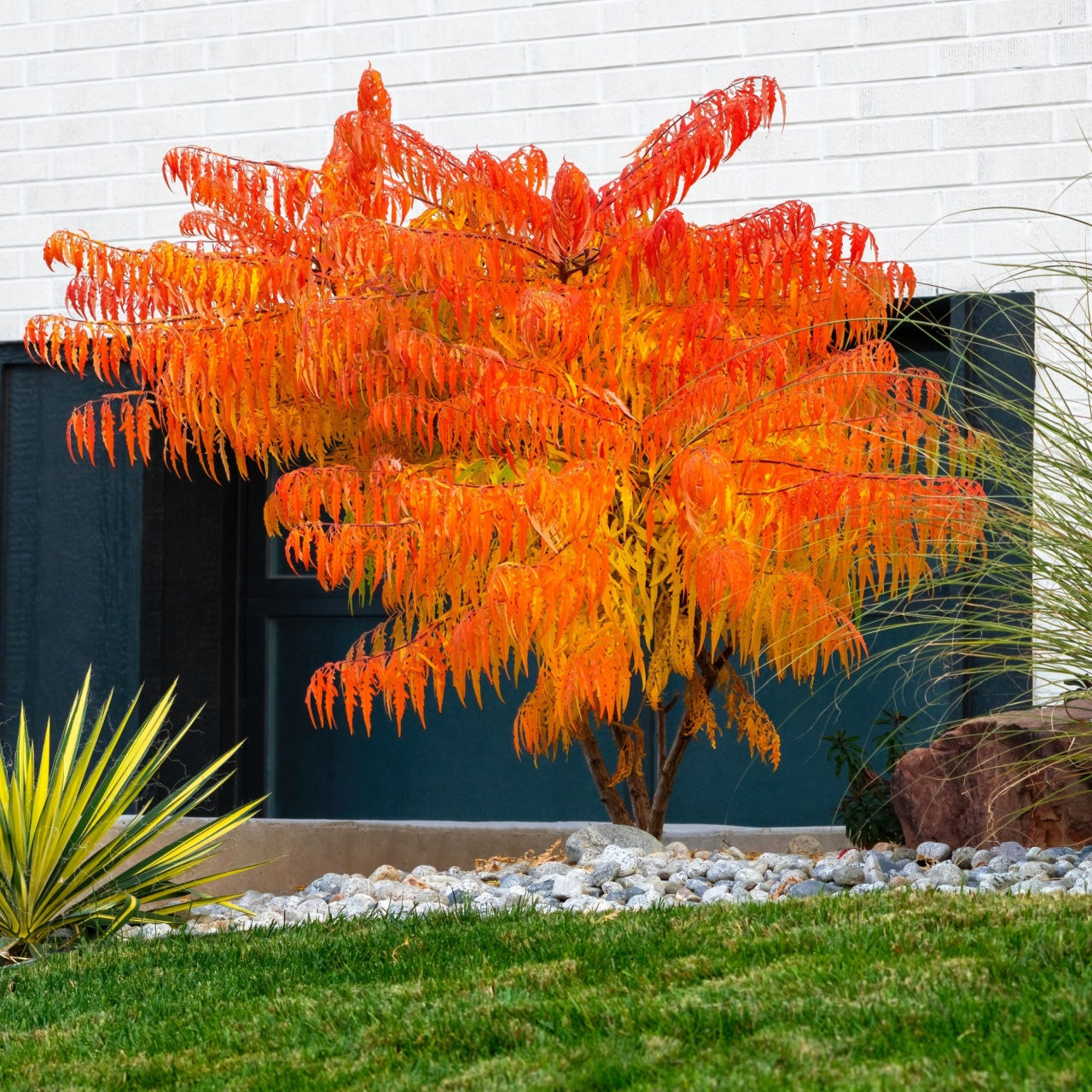Sumac
Sumac
This plant ships:
Ships Week of May 12thCouldn't load pickup availability
Exposure
Sun or ShadeHeight at Maturity
Over 10 FeetUsage
LandscapingShipped As
Bare-rootShips
Ships Week of May 12thPlanting Zones
3-9Sumac
Sumac Shrubs are a native North American species from the eastern and central states. They grow best in moderate USDA plant hardiness zones.
Sumac Shrubs Benefits
It is an abundant plant in the United States. It is appropriate as a small tree. The plant is drought-tolerant, pest-resistant, and disease-resistant. As it matures, it forms thickets, making it ideal for installing as a privacy hedge or for blocking an unsightly view.
Planting This Ornamental Shrub
They love the partial sunshine and drier soil--they can even grow in rocky soil conditions. Because of this, TN Nursery often recommends it for gardeners who need a plant to fill a semi-shaded slope to avoid grass cutting.
It is a beautiful ornamental deciduous plant that can add bold color and texture to your landscape.
Care and Maintenance
It is resilient and easy to grow. Here is how you can foster plant health:
- Where to plant it: Find a partially sunny location to install it. It can withstand a few hours of full daily sunshine. However, it enjoys partly sunny spots better than anywhere else.
- Watering needs: As it grows, it needs about an inch of weekly watering. However, once it matures, it is relatively drought-tolerant.
- Soil requirements: It needs well-drained soil, preferably amended with organic wood materials like peat moss, mulch, or organic compost.
The Shrubs have Narrow Leaves
Sumac Shrubs have narrow leaves that alternate on the stem and form points at their tips. The leaves are pale golden-green on top but pale underneath. They grow into a short but abundant, well-shaped, asymmetrical crown.
Its yellow-green flowers emerge in the late summer. Those give birth to clusters of small red berries that hungry birds will enjoy.
In the fall, the leaves generally deepen into a rich red color but could also turn deep amber or orange.
They are lovely additions to your landscape. They are also beneficial in hilly landscapes where cutting grass is hazardous.
Share






